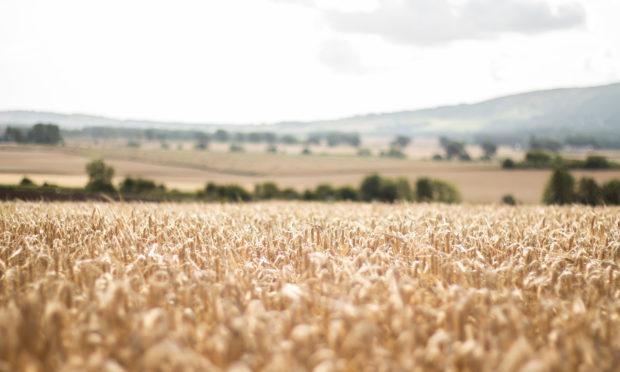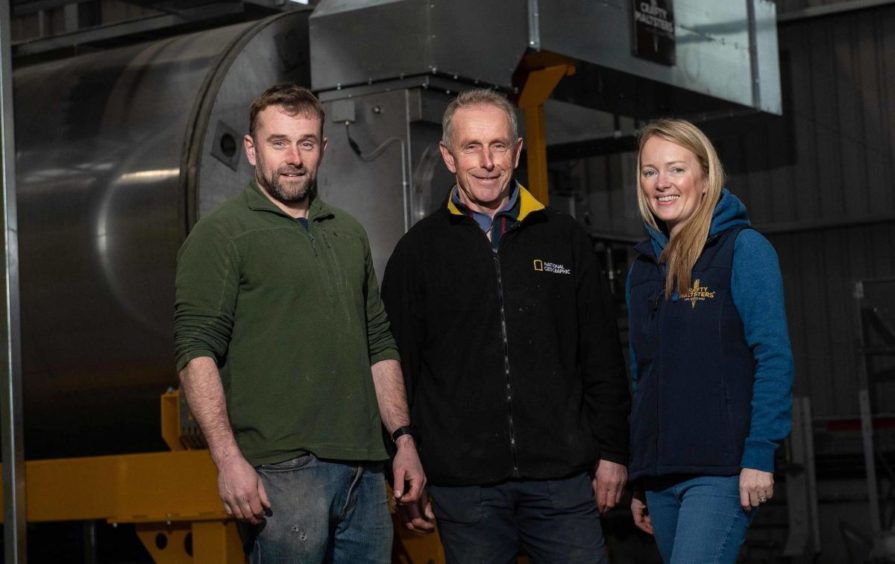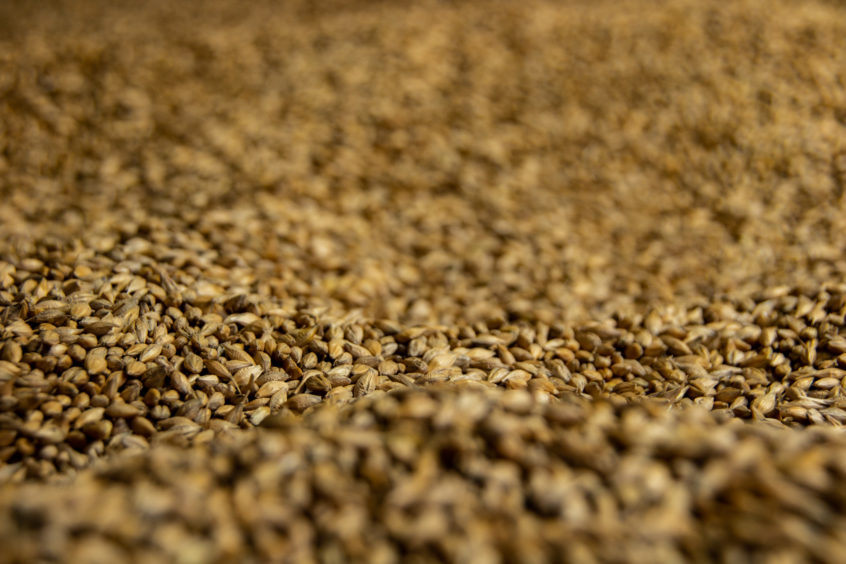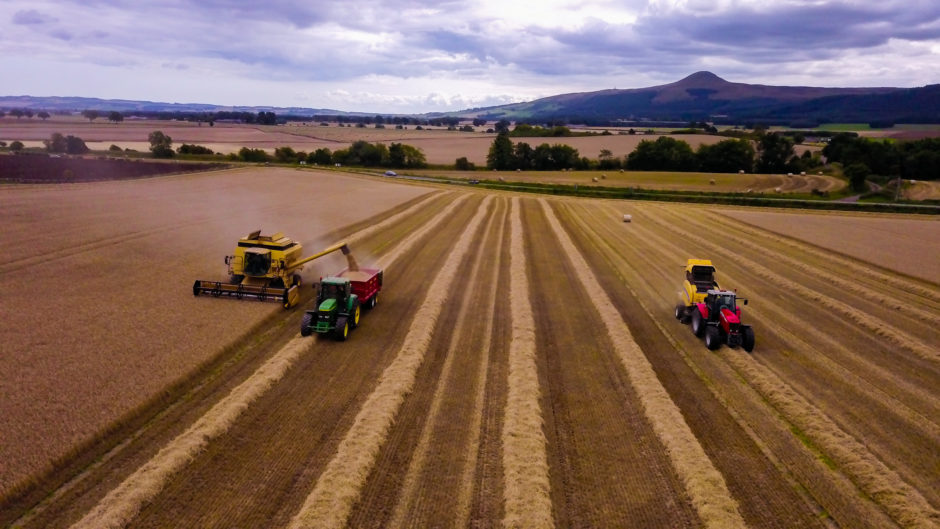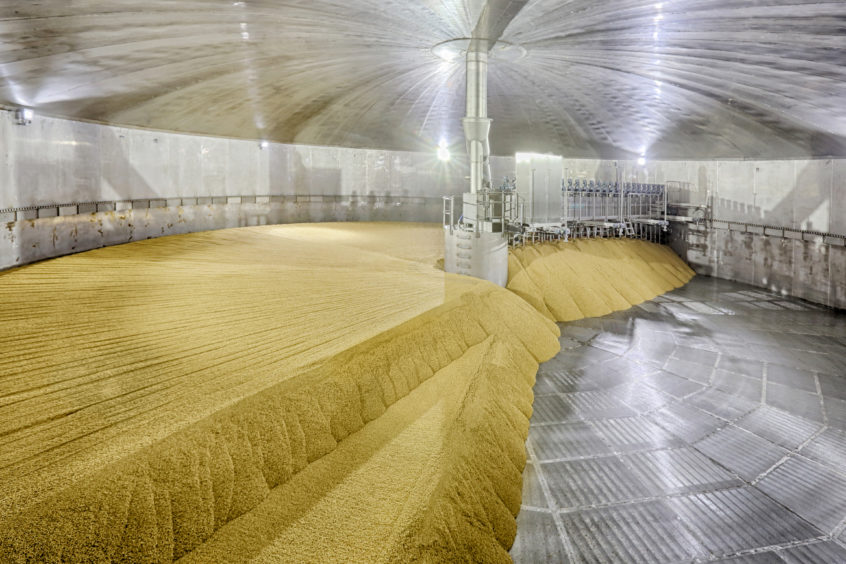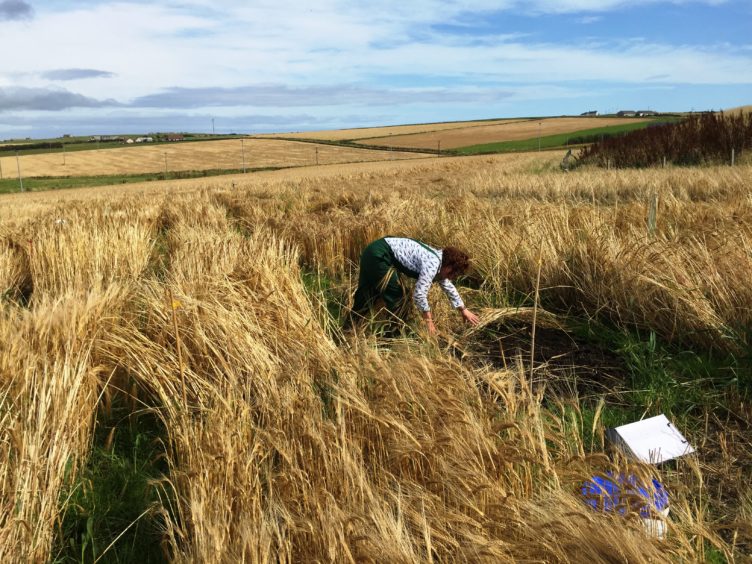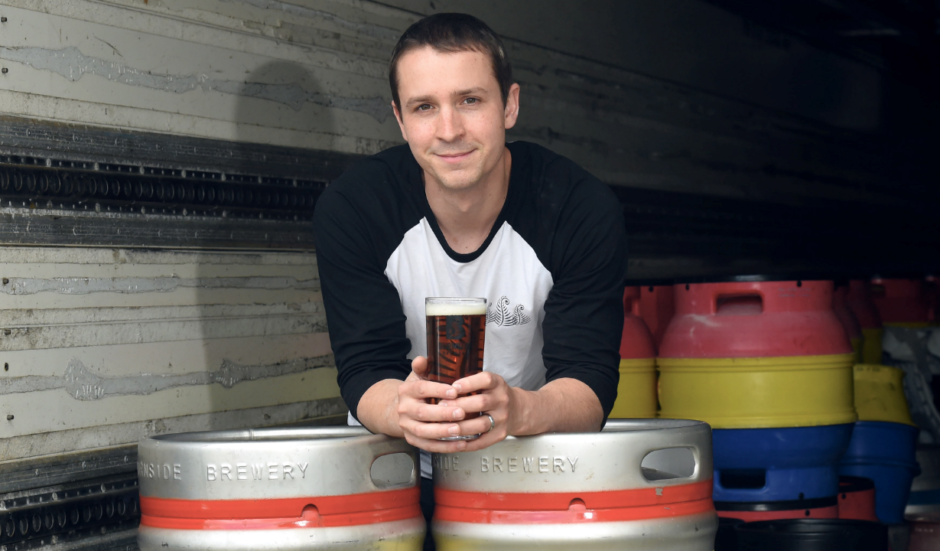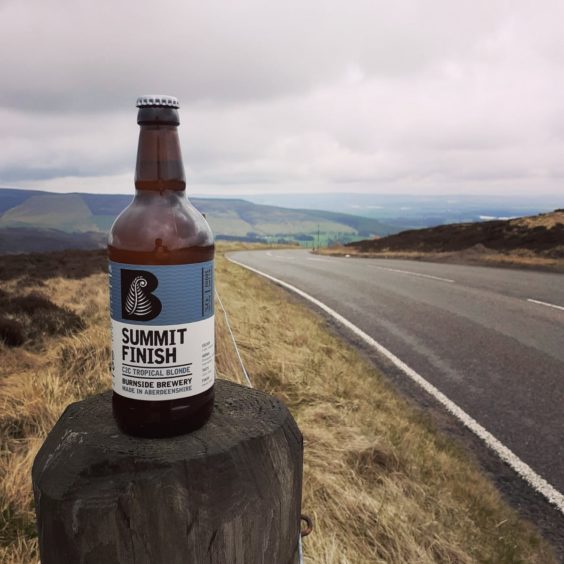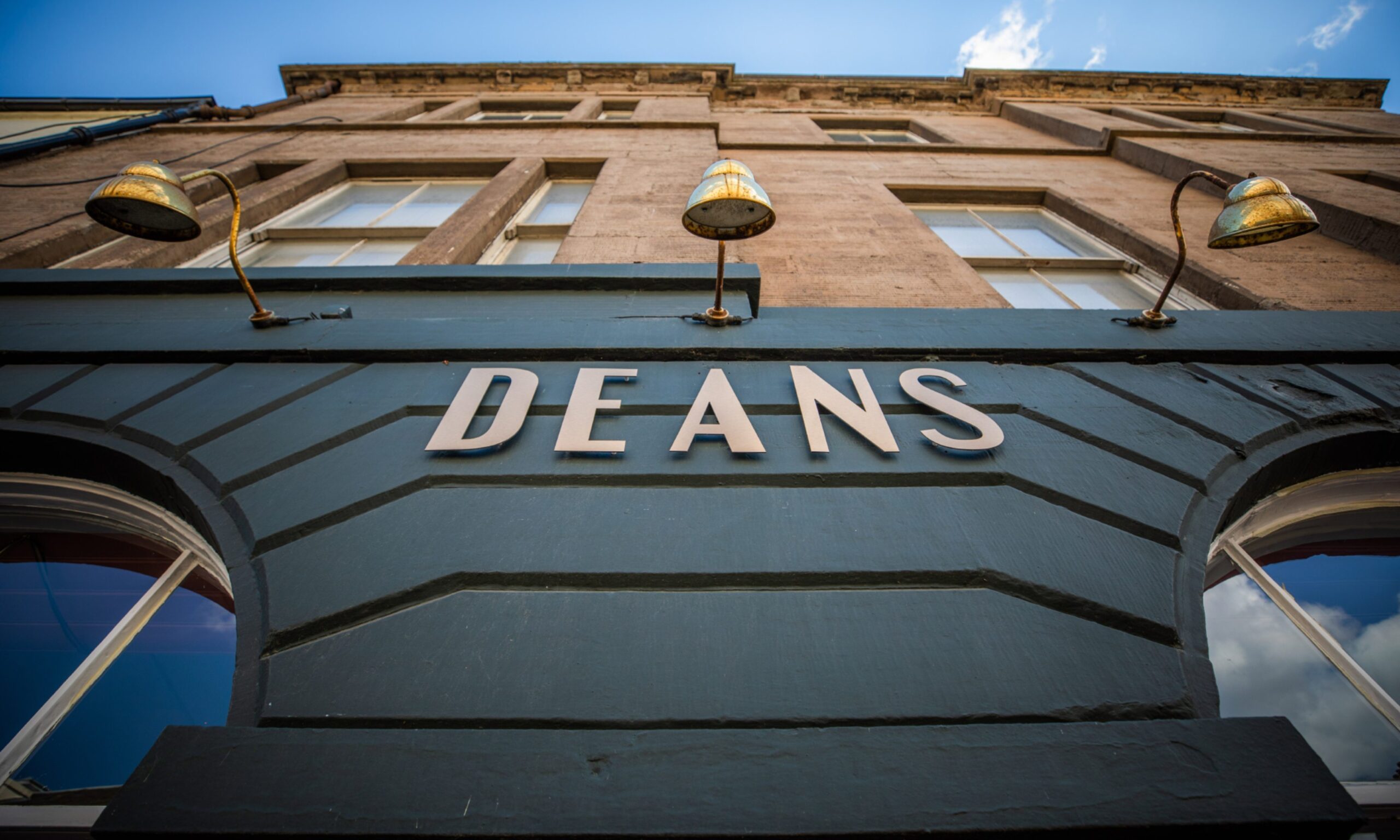Clare Johnston meets the Fife-based Crafty Maltsters who are looking to bring heritage grains not grown since the 1800s back to life, the scientist helping them do it and the Aberdeenshire brewery hoping to use the speciality malt to create a new generation of beers.
You may not know it, but barley is big business in Scotland.
Around 1.8 million tonnes are produced here each year, and with whisky distillers and craft brewers on the rise, there is a healthy domestic market – and high demand from overseas too.
But although there has been a movement among producers and consumers towards using locally-sourced ingredients in what we eat, how many of us have given much thought to where the barley malt used in the beers and spirits we drink comes from?
The Milne family in Fife have. Around five years ago when Alison Milne and her husband Daniel became more involved in the family farm in Cupar they saw a gap in the market for locally-produced speciality barley, malted in smaller batches for a more distinguished flavour – and so the Crafty Maltsters were born.
More recently, having looked to the US where there is a blossoming craft malt industry, Alison, together with Daniel and father-in-law Norman, decided to take a leap of faith and diversify their barley production to include Scottish varieties not harvested since the 1800s.
To do it, they worked with scientists at the renowned James Hutton Institute in Dundee, specialising in crops, land use and the environment, who have a seedbank of hundreds of varieties of grain.
Now, they hope their efforts in identifying and producing new speciality grains, malted in smaller batches, will chime with those distillers and brewers looking to evolve their offerings for consumers.
The Maltsters
With a background in agriculture, it was while working for the National Farmers Union that Alison first looked into the barley supply chain to breweries and didn’t like what she saw.
“The more I looked into it the more I thought this supply chain doesn’t mirror what’s happening in the craft brewing and distillers industry. It’s highly commoditised and industrialised.
“When Daniel and I took over the managerial role at the farm, we were looking to add value rather than diversify, and cereals made sense. With the little introduction we’d had to the malting sector we thought there was such a massive opportunity here because there was no provenance in the supply chain, very often [customers] don’t even know it’s Scottish never mind anything else. We thought really with the whisky industry and the emerging craft beer sector there should be more questions around that.
“We looked at the existing supply chain in the UK and we could only find one other business on-farm malting here. There are large-scale maltsters processing thousands of tonnes, there’s some smaller ones down south, more traditional but still huge, so we thought, ‘Is anything else happening anywhere in the world?’ and that led us to look at what’s happening in North America and their craft brewing and distilling scene is about 10 years ahead of ours. It transpires they have an emerging craft malting scene.
“We thought, ‘If they’re doing it it’s probably going to happen here so why don’t we be among the first?'”
The Milnes first had the idea to produce craft malt in 2015, but put plans on hold while they raised funds for new equipment – and focused on their young family too.
Alison continued: “The brewing and distilling industry wasn’t really ready for it at that stage. They were really of the mindset that malt is just malt, and didn’t think too much about where it was coming from. That’s starting to become very different now, so in a lot of ways I’m not sorry we didn’t get it off the ground back then.
“Then we managed to find an equipment supplier and we got a food processor marketing grant from the Scottish Government of 144,000 euros. The market changed and there was much more thought going into sourcing of ingredients. More brewers, predominantly smaller ones, realising that they can influence the taste of their products through the malt.
“People were sceptical at first that we could deliver the quality and consistency of products that the large guys were able to do but we’ve managed to dispel that because we did invest a lot of money in the equipment, so we have good process control, and more and more people have tried the product so they know it’s at least the same if not better, and they’re getting a distinct flavour from it.
“Initially we were still growing commercial varieties of barley but we recognised we may want to do something different so we started discussions with the James Hutton Institute and spoke to them about growing heritage varieties of barley.
“When we looked at what was happening in North America there was also a lot of emerging discussion on how barley impacts flavour of beer and spirits. Previously experts would tell you it doesn’t make any difference, but the discussions that were happening in America suggested that variety was going to make a huge difference.
“I’ve been in distilleries where they’ve let me taste the new-make spirits with different barley varieties and they’re very distinct, so from the start we wanted to be exploring how, from growing seed right to the final malt, we could impact flavour.
“James Hutton are considered to be one of the world-leading institutes in barley research and science so we went to them from a farming and malting perspective to say we would really like to grow some interesting varieties and see if there is a flavour difference. That takes a long time. In the first year they grew up a seed-bank for us of nine different types and we tried seven in trial plots last year and three didn’t grow particularly well on the farm so we decided just to focus on the other four that did.
“We selected Orkney Bere and a Western Isles Bere. It’s a really ancient variety and there’s a bit of awareness about it and a buzz around distillers. Plus they grew well on our soil.
“The other two Scottish varieties no one has done anything with since the 1800s, they grew well, we don’t yet know if they have a distinctive flavour to them, they should do, but there’s something really special because of that history and that’s why I’ll stay tight-lipped on their names for now.”
While the heritage grain is a work in progress, commercial barley remains their focus for now, produced in smaller batches to maximise the flavour. Already they have been selling to major breweries who are attracted to the quality and provenance story of the Crafty Maltsters, with customers including Williams Bros, Dundee-based 71 Brewery, and Burnside Brewery in Laurencekirk who are excited about the new varieties in the pipeline and are keen to explore the options further.
Alison explained: “With the heritage malts, from our perspective, we want to work with a brewery or distillery with the same passion we do. There are a lot of distilleries looking at it from a PR angle. The opportunity could be lost in that way because we want someone to follow through the complete journey where we’re doing some analysis and testing on the new-make spirits or beers they’re producing. We want to get that relationship right.”
The Malting Process – Alison Milne
In the malting process we harvest the grain, bring it in and dry it down to a certain moisture and then we leave it for a period of time because it goes to sleep, it’s called dormancy and it decides when it starts growing again, it can be six weeks or three months. You can see when it starts to grow because it sprouts.
Once it’s ready to be malted we bring it in to the malting shed and it’s cleaned and we dress it so we take out any small barley grains so that when it goes into the malting system it’s a similar size and malts in the same way. Then you put it in water.
We’ve got a huge vessel that we put four tonnes of grain into, we cover it with water, soak it to get moisture into it then drain it and let it rest for 14 hours. We take off the CO2 with a big fan – CO2 stops it from growing – we do that three times, then put it into another vessel called the germinator, it stays there for four days holding it at same moisture, and we let it grow.
When it’s growing, inside it’s like a little factory and it’s making all the enzymes that the brewers and distillers need to turn starch into sugar. Once we get it to the point that the enzymes are exactly where they need to be we kiln it, taking it to a high temperature for 24 hours to dry it back down to lock in the enzymes.
Where you get your flavour from is you can kiln at different temperatures – if you’re drinking a lager you’ll be drinking a pale ale or lager malt which is kilned at quite a low temperature so it’s a light colour. If you’re drinking a Guinness for example, it will partly use grains that have been kilned at a high temperature with almost a coffee bean taste to them, and that’s where you get the dark colour.
You can make caramel malt using a different process where you’re almost steaming it, and at a certain point when you take it out it’s almost got a caramel liquid inside. The whole malting process takes seven days.
The Scientist
Dr Joanne Russell of the James Hutton Institute has been working in the cereal genetics group there for 30 years and has followed the evolution of the grain around the world, starting with what is thought to be its land of birth in Israel.
She said: “Barley’s one of these really good crops that grows across a range of geographies. It started in the fertile crescent – that arc that goes from the bottom of Israel through Lebanon, Jordan and Syria and then into Turkey and down through Iraq and Iran, the classic origin of a lot of cereal crops. Then it went east out to China, Tibet and south into Africa, Northern Africa and up through the Mediterranean, Europe and Scandinavia, and as it did all that it has adapted to a wide range of environments. We have really large collections of about about 400 different barley lines from all these different places stored in gene banks around the world.
“So you look at our barley fields here and realise they’ve come a long way from their original home. Our main interest is understanding the genetic process in barley and its diversity. Our link with the Crafties [Crafty Maltsters] is that the yields in the UK of barley have pretty much reached a plateau at the moment and we need to become more sustainable and resilient.”
The institute currently has collections of up to 300 different barley lines growing in test plots, ranging from commercial lines to older “landrace” varieties.
“There’s huge amounts of variation between them that we’re trying to sequence and understand,” she explained.
“The heritage collection is mainly collected from mainland UK and the islands of Scotland. They think barley could have either come to Scotland from France through England, or it could have come across from Scandinavia with the Vikings. We don’t have enough evidence to say for sure.
“The material the Crafties have we think originated in Scotland, probably about the late 1800s. At the moment we’re not aware of anyone else using that.”
Now that the Crafty Maltsters are working towards harvesting the heritage varieties, excitement is building at the Institute about the prospects of tasting the fruits of their work.
Joanne said: “There’s always been a hint that the variation you see could change the flavour of malt but no one could ever say that for sure might be based from old notes from distilleries. Our idea is that we would actually try and understand the genetic components of flavour, because if you can understand in those older varieties that they have completely different flavour profiles and develop ways of breeding new material we can give extra value to farmers.
“The whisky industry is a huge earner for the Scottish and UK economy so adding an extra flavour would be perfect. We see evidence that the older varieties use micronutrients in the soil more efficiently than newer cultivations so you’ve got the sustainability angle too as well as the flavour, so you’re winning on both sides.”
The Brewer – Steven Lewis, Burnside Brewery
Two years ago Steven Lewis and his wife Margo took over the running of Burnside Brewery. Steve, who is originally from St Louis in the USA, moved to Scotland with his job in the oil industry and met Margo, a medical physicist, while working in Aberdeen. As keen home-brewers, when they heard the previous brewery owners were retiring, they took a nod from fate and bought the business together with their friend, Gary Gibb.
Steven recalled: “After we took the business over we kept the status quo for the first six to eight months. There was a lot to get our heads around so the fewer the changes the better, but we both have a strong passion for local suppliers and being in Scotland we wanted to see what the opportunities are with water and malt.
“We wanted to get something as local we could and being quite small we felt more comfortable going into business with the Crafty Maltsters. We tried out their stuff and absolutely loved it, and we’ve been building that relationship with them ever since.
“We went down and visited them and you can taste the malt while it’s dry, it’s quite crunchy. Admittedly it’s not something we eat all the time. There’s quite a few specifications that come with malting so you can have a look at the specs they produce and see whether you might run into trouble; so whether it’s too dark or there’s not enough sugar content. They’d done their diligence, they had the spec sheet, it was something we thought we could work with, so we bought a tonne of malt, literally, and went for it.”
Crafty Maltsters grain is ‘mashed in’ with hot water to convert starch in the malt to sugar which will later be turned to alcohol
While most of us would have never given thought to how different types of malted barley taste, in brewing and distilling terms, the difference can be crucial.
Steven added: “We could absolutely taste the difference with the Crafty Maltsters’ grain. We found initially in fermentation it was a bit more biscuity, a bit more meaty, we found it had really good fermentation properties and it had a residual sweetness with this malt that we didn’t get with other products we’d been using.
“We initially started with a new product which was safer from our standpoint, that was Summit Finish, a blonde beer, and we went through a few revisions with it and it’s currently one of our charity beers supporting a cycling charity. The initial beer that we did is admittedly our favourite beer that we’ve made to date.”
Now their mission is to share their passion for provenance with their customers as they look to evolve their offering, including potentially using the heritage malt that is currently being developed by the Crafty Maltsters.
He said: “Heritage grains are of interest to us and we’ve earmarked one of these batches and we’re already mulling over the name of what we might call it. It’s a huge outlay for the Crafty Maltsters to plant it, grow it and malt it, but once we get our hands on it, it will be a few months to trial it, create the finished product and then scale it up.
“We’ve started talking about provenance a bit [to customers], but with alcohol people tend to go for what they like and the onus is on the producer to use the ingredients with provenance. Going to the Crafty Maltsters we know the field it came from and it gives you that extra confidence.”
Barley Basics
Helen Plant is a senior market analyst specialising in cereals and oilseeds at the AHDB (Agriculture and Horticulture Development Board). Here, she brings us the facts on commercial barley production in Scotland and the UK.
“For barley, the vast majority of what we produce is used in the UK. We produce more than we need and we export far more than we import.
“Going back 10 years, the barley area has been increasing particularly around spring barley, which has uses in crop rotation and can have benefits in terms of disease and pest control.
“Over the past five years our imports have been really low compared with exports of around 1.2 million [metric] tonnes of barley. Our main destinations are within the European Union. Our top destination is Spain by quite a stretch.
“We have a good traceability system in the UK. Every load of grain that leaves the farm has a passport attached to it. That passport details where it’s been grown and how it’s been treated as well as the variety. Most of it will either go through a central store, or direct to maltsters. If it went through a store there would be a mix of grain, but there would still be traces of which farm it was made from.
“In Scotland, farmers grow [barley] primarily for distilling uses. There are small differences in how much is grown within Scotland and used in Scotland, but primarily the malt grown is used there so there’s a strong domestic market, primarily for spring-grown barley, that is meeting distilling needs.”
